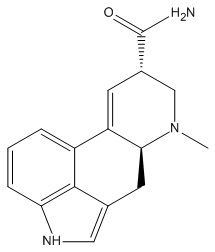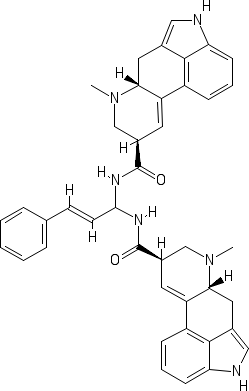LSA adducts
It has been documented that Lysergic Acid Amide (LSA) is capable of forming adducts with various aldehydes. [1] Such adducts can form spontaneously during extraction of LSA if aldehydes are introduced to the solution, and can alter the subjective and physiological effects of LSA. [2]
Lysergic Acid Hydroxyethylamide
Lysergic acid hydroxyethylamide
Cinnamylidene-bislysergamide
Cinnamylidene-bislysergamide, a theoretical adduct of two molecules of LSA and one of cinnamaldehyde, may be produced by introducing cinnamon bark essential oil to LSA. It appears to produce radically different subjective experiences to LSA, with a rapid onset, rapid peak, and far shorter duration.
The 2:1 ratio is theorised based on similar cinnamaldehyde adducts such as cinnamylidene-bisacetamide and cinnamylidene-bisphenylacetamide, which are proven to form without the need for a catalyst.
| Lysergic Acid Amide | Cinnamaldehyde | Cinnamylidene-bislysergamide |
|---|---|---|
 |
 |

|